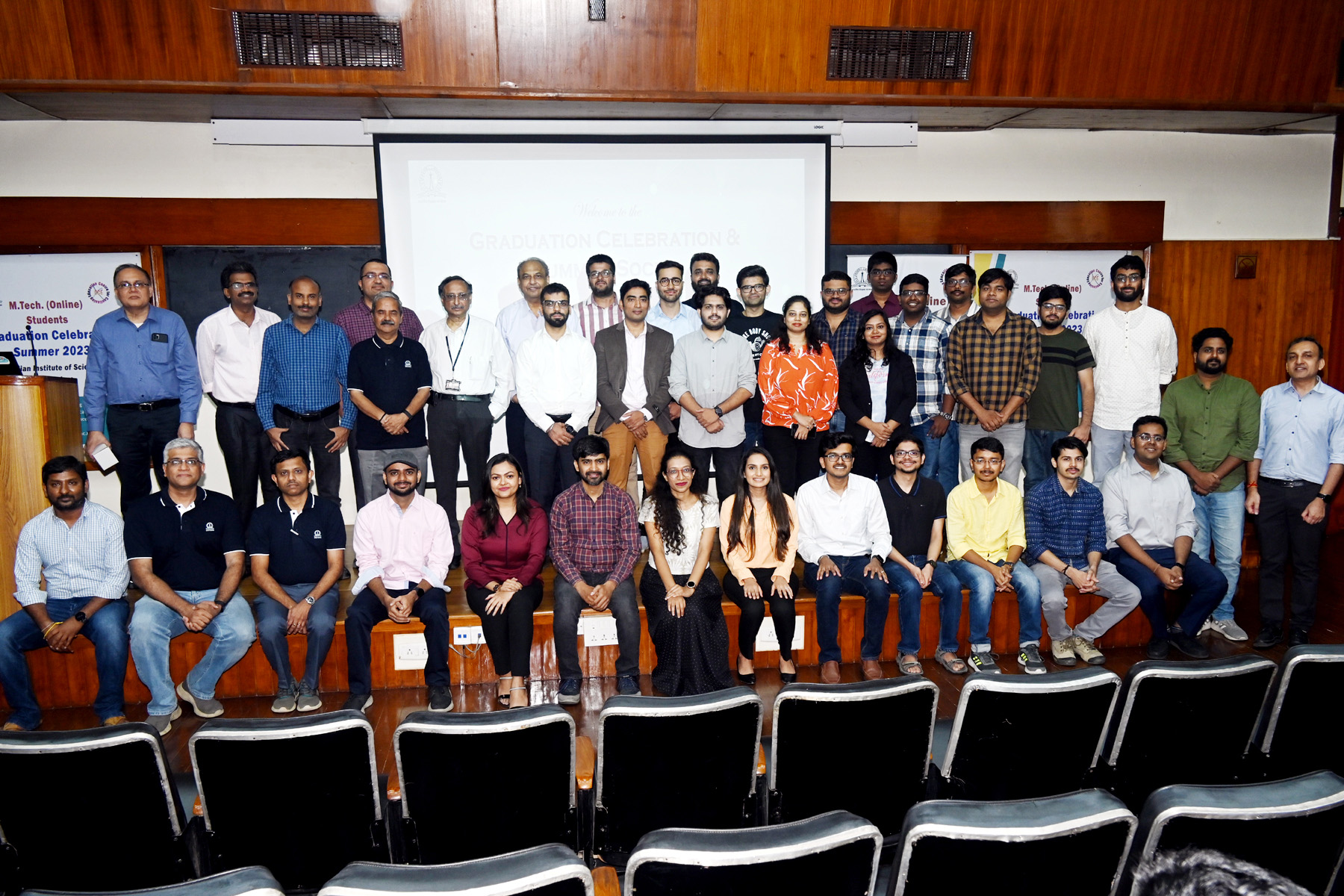70%
have completed degree within 2.5 yrs (2021 batch)

Learning never stops in this fast-changing world with development and advancements in every field. Keeping pace with them is important to be relevant to the context of work life.
Here is a golden opportunity for employed engineering graduates to get a Masters’ degree from the top University in India, the Indian Institute of Science (IISc), Bangalore. The M.Tech. (Online) program is designed for working professionals to pace themselves and complete a post-graduate degree at IISc that has the same rigour, intense learning and practice as our fulltime M.Tech. degree. The program covers not only conceptual classes, but also an in-house project work within your company that helps demonstrate and apply your learnings. All classes are conducted fully-online and synchronously by experienced faculty at IISc.
M.Tech (Online) gives the learners:
This is a sponsored degree program. Interested candidates need to be nominated by their company through an MOU that they have with IISc. See details below.
Core Courses:12 Credits
Elective Courses: 20 credits
Project: 32 Credits
Core Courses:16 Credits
Elective Courses: 20 credits
Project: 28 Credits
have completed degree within 2.5 yrs (2021 batch)
Retention Ratio of students in the programme
students in the program over 3 years
Total estimated fees for a 3 year completion time. Fees are payable each term, based on credits enrolled.
for Artificial Intelligence
for Data Science and Business Analytics
for Electronics and Communication Engineering
Minimum Degree:
BE/BTech in CS/ECE/EE or equivalent discipline
Percentage:
At least 70% or equivalent CGPA in all degrees
Years in Industry:
Two years at the time of joining
Others:
Strong mathematical and programming experience
Selection:
Online written test
Minimum Degree:
BE/BTech/BS(4yrs)/Equivalent (4-year degree/diploma after 12th standard) or Master's degree in any discipline
Percentage:
At least 60% or equivalent CGPA in all degrees
Years in Industry:
Two years at the time of joining
Others:
Strong mathematical and programming experience
Selection:
Online written/programming test
Minimum Degree:
BE/BTech in ECE/EE or equivalent discipline
Percentage:
At least 60% or equivalent CGPA in all degrees
Years in Industry:
Two years at the time of joining
Others:
Strong mathematical and programming experience
Selection:
Online written test
All nominated candidates who have applied to the program and meet the eligibility criteria will be asked to attend an online written/programming test for the streams they have applied to.
Calculus: Limits, continuity and differentiability. Maxima and minima. Mean value theorem. Integration.
Linear Algebra: Matrices, determinants, system of linear equations, eigenvalues and eigenvectors, LU decomposition
Probability: Random variables. Uniform, normal, exponential, Poisson and binomial distributions. Mean, median, mode and standard deviation. Conditional probability and Bayes theorem.
Foundations: Linear Algebra/Matrices, Probability, Statistics and Combinatorics at the undergraduate engineering mathematics level, in addition to basic Calculus and Geometry.
Programming: Data Structures (arrays, matrices, etc.) and Basic Programming (choice of Java/C/C++/Python).
The online written test will contain 7 MCQ questions and 1 programming question and the duration is 60 mins.
A sample of a filled form is given here.
Step 0: Please keep the following documents ready before you start filling the application form
Step 1: Visit https://admissions.iisc.ac.in/ and select "Apply Now" under M.Tech. (Online) Programmes for Sponsored Candidates
Step 2: Register with your e-mail address and a password to start the online application process by creating a new user account. The Email ID used to register cannot be changed later, and will be used to send admissions related emails.
Registration form for user account
When you submit the registration form, you will receive an e-mail asking you to verify your e-mail address by clicking on a link.
After the e-mail address is verified, your account is set up.
Step 3: Log in to the website to fill the application form. You will need information about / from the following documents, so have them handy.
The Application Form is divided into five sections, each appearing inside a separate tab
TAB 1: Personal Details
Note:
On clicking the "Next Screen" button, if the browser does not take you to the next tab, it means some mandatory fields have not been filled
(correctly). If this happens, look for error messages which are displayed in red and correct them.
TAB 2: Details of Employment
Note:
TAB 3: Preference of Stream(s)
TAB 4: Details of qualification
In this tab you will provide details of marks/grades you obtained in examinations: 10th Std*, 12th Std*/Diploma, Undergraduate* and Post-Graduate (i.e., Masters, if applicable).
Each exam is to be selected from the drop down menu in the top item (Qualification), one at a time. For example you should choose 10th std from the drop down menu, and after entering all the details, press the "SAVE" button. In the right side bar entitled "Entry Status" you will see a green (tick mark) against 10th Std.
Now select the next exam in the "Qualification" drop down and fill the details and so on
The right side bar entitled "Entry Status" provides visual feedback to you about the details of what you have filled.
Note:
Either your Undergraduate degree or Post-Graduate degree must match with the 'Qualifying Degree' that you entered in the
'Preference of Stream(s)' page. It must also meet the basic eligibility requirements of the stream you selected.
TAB 5: Undertaking
Please read all the undertaking points and declaration, and indicate that you agree with each of them to proceed further.
TAB 5: Preview and Submit
office.iken@iisc.ac.in
+91 80 2293 2508
https://iken.iisc.ac.in/mtech-online/
IISc's Knowledge and E-Learning Network (IKEN),
Centre for Continuing Education (CCE),
Indian Institute of Science, Bengaluru-560012
